
by Team Demas | Mar 17, 2020 | Uncategorized
Dental care ensures that you enjoy the best oral health and like the way your teeth appear. It is one of the reasons to bring back that beautiful smile and have the perfect bite. However, some situations could lead to poor alignment of the teeth, and that means that you have to look for ways to correct them. If you talk to affordable orthodontists, they will tell you that braces are the perfect way to bring back the beautiful smile.
Studies show that you will not have to wear adult braces for too long because the average time that people wear them is two years. It means that as long as you follow instructions, it will not be too long before you get the right teeth alignment. In addition to that, modern braces are comfortable, and therefore, you do not even have to worry about how long you will be wearing them.
Improve Self-Esteem
The main reason people look for affordable orthodontists for braces is that they want to improve the way they look. Everyone wants to have that perfect look, and that includes their teeth. If you are involved in activities where your teeth are always exposed, you will not want to have people looking at you and wondering how you feel. For instance, if it is a presentation, you will not even want to appear before a panel.
However, when you get affordable braces, you quickly transform into a confident person, and that is how your self-esteem creeps back in. You will notice that when you can speak before an audience without having to worry about what they think about your teeth, your productivity grows even more. It is especially important for people whose careers depend on their physical looks.
Improve Oral and Physical Health
Although most people consult affordable orthodontists on braces because of cosmetic reasons, it is even more critical because it leads to improved physical and oral health. For example, cleaning teeth when they are correctly aligned will be more comfortable than when they are crooked. If you are brushing and the brush cannot reach every surface of the tooth, you can be sure that your oral health will be in jeopardy. However, when they are aligned, even flossing will become much more manageable.
The same effect on oral health applies to physical fitness because when you observe hygiene, you are sure that the entire body will respond accordingly. You will notice that you even feel happier, and that is how your body transforms into one that you have always wanted. It all starts by getting those braces for adults and using them correctly.
How to Get the Right Braces
After knowing the reasons to visit affordable orthodontists in your area to buy braces, you should also know how to find the best. Remember that these are items that apply to your health, and therefore, you have to choose them carefully. Many orthodontists will offer these items, but you should not choose one before you are sure of what you are buying. The best option is to start by looking for reputable orthodontists.
In addition to that, you have to know the materials that are best for you before buying these items. You may want to choose between metal and ceramic braces, depending on what is most appropriate for you. For instance, metal materials are the most common type because they have been in use for the longest time. However, you may also want to experiment with other models such as ceramics, to know how much better they can get.
To sum it up, affordable orthodontists can help you to find braces and improve your oral health. It will also enhance your smile and build your self-esteem so that you can face people with confidence. However, it is essential to know that to achieve such results; you have to look for reputable professionals who provide orthodontics for adults. Get your preferred materials for braces today, and start changing the way you look.

by Team Demas | Mar 2, 2020 | Uncategorized

According to the American Association of Orthodontists, there are around 4 million Americans wearing braces today. Clear ceramic braces are among the most commonly worn. You might not be as familiar with them as you are with metal braces. Here’s what you need to know about clear ceramic braces.
Advantages of clear ceramic braces
People often choose to have clear ceramic braces because it’s not as visible as metal braces. In particular, young adults and teenagers prefer not to have attention drawn towards their braces during group outings or when giving public speeches. Clear ceramic braces are less visible because they’re made with materials that are tooth-colored or clear. In addition to being less visible, there’s less space taken up by the brackets on the front of your teeth. With advancements in removing clear ceramic braces, there may also be less chance that your tooth enamel will be damaged when they’re removed. In comparison to Invisalign, clear ceramic braces can help with more significant issues related to teeth straightening. This option can also be less likely to cause any cuts to your gums.
Disadvantages of clear ceramic braces
If not properly taken care of, clear ceramic braces can get stained easily. It’s important to consume fewer foods and drinks that cause stains. Additionally, it’s necessary to regularly brush them, which can take time due to having to use specific cleaning instruments. In the event of stains, orthodontists are able to change out the wires at your next appointment. Clear ceramic braces can also potentially be more expensive than metal braces. Be sure to consult with your orthodontist about payment plans to see if the costs can be managed. Lastly, your treatment may take longer than they would with metal braces. Discuss with your orthodontist about the timeline for when you’ll be able to have your clear ceramic braces removed.
Differences between clear ceramic braces and Invisalign
While both of these options provide clearness, there is some difference between them. Clear ceramic braces have brackets and wire, while Invisalign does not. Instead, Invisalign is a plastic aligner that goes over the teeth and helps to move them in the right position. Additionally, the appointments are not as long or frequent for Invisalign patients. Patients with clear ceramic braces have to have wires and brackets adjusted, which can take more time. It may also be less uncomfortable using Invisalign in comparison to clear ceramic braces. The option you choose will depend on what your specific teeth issues are. Your orthodontist will be able to determine which option is best for you.
Clear ceramic braces have both advantages and disadvantages for patients. It’s important to weigh the pros and cons in order to decide on the right option. Your orthodontist will be able to inform you about all of your options and recommend the best course of action.
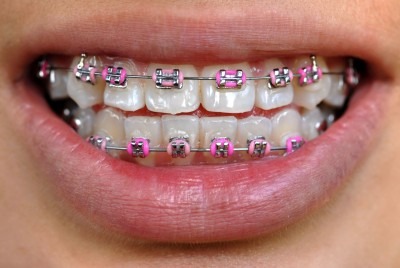
by Team Demas | Feb 14, 2020 | Orthodontic Treatments
It’s a fact of life — some kids will need metal braces to correct minor and severe dental issues they develop down the line. However, as a parent, it’s your job to ensure they’re ready for the responsibility. If the two of you have been contemplating braces for children, read on.
Have They Shown Concern?
A crooked smile can take its toll on anyone’s self esteem — especially a child or teen. Ask yourself whether your child has expressed concern about their teeth in the past. Do you think straighter teeth would help boost their confidence? If so, treatment is worth it.
They Feel Comfortable at The Orthodontist’s Chair
Metal braces require some upkeep. You’ll have to bring your child in to get them tightened every few months. Make sure they are ready to make that commitment.
They Take Great Care of Their Teeth
Clear and metal braces require upkeep at home too. Make sure your child is ready to take on that responsibility. They’ll have to clean their Invisalign trays and make sure to take them out when eating. If the two of you opt for metal braces, they’ll have to avoid certain foods and learn how to brush around the wires.
They are of Age
Braces are great for kids. However, you want to make sure you’re starting treatment at the right age. Eleven is common for younger children. However, your teenager is a great candidate, as well.
They’re In Pain
Pain and soreness are the biggest red flags you should watch out for. Misaligned teeth may cause pain down to the jaw. To prevent any severe issues now and down the line into adulthood, bring your child in for a consultation as soon as you can.
Contact Us For More Information
If your child has expressed concern about their teeth, and proved themselves to be a responsible candidate, then congratulations! Your child will make an excellent candidate for treatment. For more information about metal braces, contact us today. We’ll get you in touch with a qualified orthodontist in the area who can help you develop the best game plan for you and your child.

by Team Demas | Feb 7, 2020 | Invisalign

Each year, 25% of patients with braces are adults, and the remaining 75% are children and teens. Invisalign aligners are a popular alternative to traditional metal braces for patients of all ages. You may be wondering: Can an orthodontist near me use Invisalign to treat my particular case? Here are some examples of the kinds of teeth problems that can be fixed with Invisalign.
Overbite
If your top front teeth hang over your bottom teeth, you have an overbite. Most patients possess at least a slight overbite. If the overbite is pronounced, your orthodontist may describe your bite as deep. A deep bite may lead to issues such as wearing down of the teeth or jaw discomfort. Orthodontists discuss overbites using percentages. They like to see overbites of between 5% and 25%. Invisalign clear aligners are used to correct overbites, including deep bites.
Underbite
If your bottom front teeth are in front of your top teeth when your mouth is closed, you have an underbite. Often, the underlying issue is that your lower jaw protrudes too much. If you have an underbite, it may interfere with your ability to chew well and talk clearly, and tooth wear may become a problem. Invisalign clear aligners are used to correct underbites in certain cases. A more pronounced underbite may need surgical treatment in addition to Invisalign. If you’re wondering, can an orthodontist near me fix my underbite? you should seek a consultation.
Crossbite
Your orthodontist may tell you you have a crossbite if some of your top teeth rest inside your bottom teeth when you close your mouth; your top teeth should all sit on the outside of your bottom teeth. A crossbite can cause tooth wear or chips in teeth, receding of the gums, or small grooves above the gum line. These issues can result in pain in the gums and bone loss. Invisalign clear aligners can treat some cases of crossbite.
Gap Teeth
Your orthodontist will tell you you have gap teeth when they see extra spaces between teeth. Gap teeth may cause the formation of pockets between your gums and teeth, which is a problem since food particles may accumulate in these pockets. This can lead to painful gums and possibly to gum disease. Invisalign clear aligners can be used to close gaps in teeth. You may be thinking, can an orthodontist near me help my gap teeth? You can find out during an initial consultation.
Open Bite
If you close your mouth and find that your top and bottom teeth don’t meet, this is referred to as an open bite. This problem can cause difficulties with chewing or biting into hard foods such as apples. Invisalign clear aligners are used to treat open bites.
Crowded Teeth
If there isn’t sufficient space in your jaw for all of your teeth to be positioned normally, your teeth may be pushed together or toward the front or back of your mouth, or they may twist and overlap. It’s hard to perform proper hygiene with crowded teeth, since it’s difficult to brush and floss them properly. Tartar, plaque, and bacteria can accumulate and eventually cause cavities and gum disease. Crowded teeth may get worse as the years go by. Invisalign clear aligners are used to correct crowded teeth.
Baby and Permanent Teeth
Baby teeth sometimes need orthodontic intervention, when the child is between six and 10 years old. This is called Phase 1 treatment, and its purpose is to help jaws and arches develop so that baby teeth and new permanent teeth are properly spaced. Phase 1 treatment can:
- Keep current bite problems from worsening
- Straighten baby teeth
- Make a young patient’s smile look better
- Address behaviors like thumb sucking
- Help make Phase 2 interventions easier and faster
Invisalign First aligners can be used for Phase 1.
Crooked Teeth
Even if you don’t have a pronounced problem, you might simply want to have straighter teeth to increase your confidence about your appearance. Invisalign can straighten your teeth as much as 50% faster than traditional metal braces.
Invisalign clear aligners can fix many types of dental problems. They work faster, look better, and feel more comfortable than traditional braces. They are used for patients of all ages, including young children. If you’re thinking, where can I find an orthodontist near me who uses Invisalign? contact our team today.

by Team Demas | Jan 9, 2020 | Uncategorized

There are 4 million people wearing braces in the United States. Out of those 4 million, 75% of them are under the age of 18.
So, it’s safe to say that the growing teen should have access to great dental care all throughout their adolescence.
Having a family orthodontist you trust should be crucial if you’re a parent. If you’re concerned with finding the right professional that’s right for you and your family, keep reading.
Here are the top things you need to consider when selecting a new family orthodontist.
How old are your children?
If you have a teen or two in the household, strongly consider family orthodontists over those that do not offer family-related services. Family orthodontists cater to a wide range of ages, whether you’re looking to get your teen’s teeth straightened, or need to get childrens braces for your little one. In conclusion, make sure that the orthodontists in question are certified to work with families, and not just one specific population. After all, having a doctor for each member of your family can get rather confusing fast.
What kind of dental work do you need?
Family dentists should also cater to the adults in your family. You, as a parent, may not necessarily need braces, but one never knows when the odd emergency can happen. Ensure that your orthodontist or dentist of choice can cover any dental surgeries or sleep apnea treatments.
Check testimonials
When in doubt, ask your friends and family for testimonials. Also, if you’ve stumbled across a clinic’s website, carefully read through their reviews to ensure your potential orthodontist is a good fit.
If you still find yourself asking a ton of questions regarding health coverage and finances, make sure to give their office a quick call.
Family Orthodontists and finding the best fit
As you can see, there are many things you should consider when looking for the best orthodontist for you and your family. Make sure to check reviews, contact their clinic, and make your best judgment. After all, this is a potentially lifelong connection you’re making — since family orthodontists cater to children, teens, and adults.
If you’ve been searching to no avail, make sure to contact us for some of the best dental care in the area.

by Team Demas | Jan 8, 2020 | General Articles
 According to the American Association of Orthodontists, there are around 4 million Americans wearing braces today. As family orthodontists, we know that sometimes there can be issues that come with wearing them. It’s important to know how to handle them when they come up. Here are some common issues with braces you should know how to handle.
According to the American Association of Orthodontists, there are around 4 million Americans wearing braces today. As family orthodontists, we know that sometimes there can be issues that come with wearing them. It’s important to know how to handle them when they come up. Here are some common issues with braces you should know how to handle.
Tooth soreness
When you have your braces installed, it’s common for your teeth to be sore for a week. It’s completely normal. During this time period, stick to a diet of soft foods. If you need to, you can take ibuprofen to help with the soreness. Also, try chewing sugarless gum. While the feeling might be uncomfortable, the blood flow to the teeth will increase. This will help to reduce the discomfort.
Mouth ulcers
It’s possible at some point during your treatment, your mouth will get sores or ulcers in your lips or cheeks. This usually happens during the first week of wearing your braces. Once your mouth has gotten used to wearing them, the sores and ulcers will slowly shrink away. In the event you continue to experience them in your mouth, contact your doctor for assistance. If there’s a specific edge of your braces that’s causing the sore, you can use wax to cover it. Consistently keep the area of the sore clean while your mouth adjusts to the braces.
Wire out
Sometimes you’ll notice that the wire of your braces is out of the tube. Whenever you notice this, attempt to put the wire back into the tube with your hands. If you struggle to do it with your hands, you can also try using tweezers. If all else fails, and the wire is still bothering you, contact your doctor for assistance.
Bracket loose
Your brackets may become loose or break from time to time. It’s usually caused by either playing with your braces or eating hard foods. As long as you’re not experiencing pain, wait until your next appointment with your family orthodontist to resolve the issue. Keep the bracket in place, and if there’s any discomfort with it, use wax to cover it. In the event that the bracket has completely come out, bring it with you to your next appointment, and let the staff know.
These are some of the many common issues that occur while wearing braces. As you get used to wearing them, most of these issues will be rare. Be sure to follow all of your family orthodontist’s instructions with taking care of your braces.
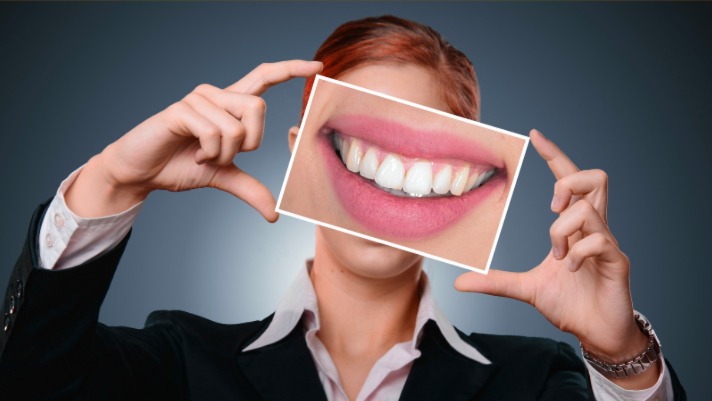
by Team Demas | Dec 24, 2019 | Uncategorized
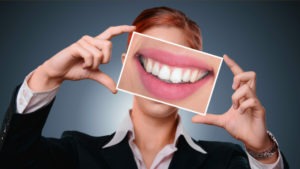 When compared to teens with traditional braces, 47% of Invisalign users said they had a confidence boost, as opposed to 22% of teens with metal braces. While crooked and misaligned teeth can make you self-conscious on their own, having metal over them during treatment can make you feel even worse. While braces are the best way to straighten teeth, if you don’t want to hide your smile during treatment it may be time to consider Invisalign aligners.
When compared to teens with traditional braces, 47% of Invisalign users said they had a confidence boost, as opposed to 22% of teens with metal braces. While crooked and misaligned teeth can make you self-conscious on their own, having metal over them during treatment can make you feel even worse. While braces are the best way to straighten teeth, if you don’t want to hide your smile during treatment it may be time to consider Invisalign aligners.
The Benefits of Invisalign
- Appearance
In teens that are already feeling self-conscious about their appearance, the addition of clunky metal braces can make them feel even more self-conscious about their appearances. Clear braces, on the other hand, are nearly undetectable to the naked eye, and instead offer a seamless and attractive way to straighten teeth.
- Comfort During Treatment
Metal braces can be uncomfortable, and they can only be removed by an orthodontist. Clear braces like Invisalign can be — and should be — removed when eating or drinking and while brushing your teeth. The ability to remove the aligners as needed allows you to take better care of your teeth, while not having to worry about your treatment affecting how you do daily activities. There also aren’t any bulky metal brackets or wires, so you don’t have to worry about hurting your tongue or cheeks.
- Safety
Clear braces are also safer than traditional braces as they don’t have the metals wires mentioned above. These wires can scratch and puncture the inside of your mouth leading to pain and discomfort. Invisalign is smooth and seamless, fitting over your teeth without gaps or protruding edges. Clear braces can also help diminish the risk of tooth decay, as you’re able to better clean your mouth while wearing them.
- Less Time in Treatment
When compared to traditional braces, which can be in place for up to five years, clear braces are usually only used for one to two years at most. This gives you more time to focus on doing the things you love, as opposed to constantly worrying about your braces or scheduling orthodontist appointments.
- No Surprises
When you get clear braces through Invisalign, the process of designing your aligners is completely digitized. This means that the process of straightening your teeth has already been mapped out using digital scans of your teeth and mouth. Because of this, there are fewer surprises associated with the process, and instead, you will know exactly what to expect during and after treatment. Alternatively, metal braces can take trial and error to achieve desired results, contributing to longer treatment time and more discomfort for you.
Overall, Invisalign offers a convenient, attractive, and customized option for both teens and adults looking to achieve straighter teeth. If you’re tired of being embarrassed by your smile, but don’t want to hide out while fixing your teeth, Invisalign is an option that might be perfect for you.
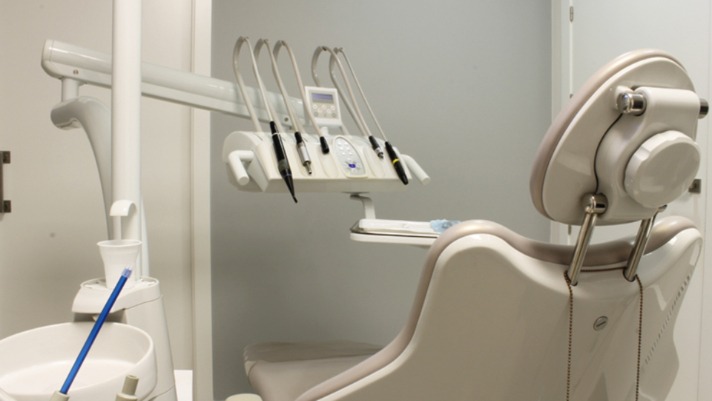
by Team Demas | Dec 18, 2019 | General Articles
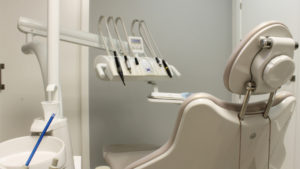 Out of every four patients that receive braces, one is an adult. Deciding to get braces later in life is a big decision, and many put it off simply because they don’t like the look of traditional metal braces. To help these patients achieve straighter teeth, Invisalign aligners are an option offered by many affordable orthodontists. These clear braces are nearly invisible to the naked eye and can make you feel better about smiling during treatment, without worrying about flashing your braces to everyone. If you’re tired of struggling with crooked and misaligned teeth, here is what you need to know about this incredible option.
Out of every four patients that receive braces, one is an adult. Deciding to get braces later in life is a big decision, and many put it off simply because they don’t like the look of traditional metal braces. To help these patients achieve straighter teeth, Invisalign aligners are an option offered by many affordable orthodontists. These clear braces are nearly invisible to the naked eye and can make you feel better about smiling during treatment, without worrying about flashing your braces to everyone. If you’re tired of struggling with crooked and misaligned teeth, here is what you need to know about this incredible option.
What does Invisalign Treat?
Before we take a look at the process itself, you should know what Invisalign typically is used for. Simply put, these clear braces can be used to correct crowded teeth, gapped teeth, and mild overbites. Booking a consultation with an affordable orthodontist can offer you the change to see just what this option can do for you. Often times affordable orthodontists will offer complimentary consultations to talk through options and evaluate your candidacy, after which you can decide if you’d like to move forward with treatment.
Getting Fitted
Once you’ve decided to move forward, detailed scans of your mouth will be taken. X-rays and digital scans will be used to determine how the teeth should be moved. This information will then be tailored to a custom treatment place that will allow you to get the smile you’ve always wanted. It takes about four to five weeks to receive your aligner trays and then can begin your treatment.
The Treatment Process
Aligners are worn for one to two weeks at a time. This helps gradually move teeth to their desired location. Each new tray will be slightly straighter than your teeth currently are, allowing them to slowly move to fit correctly. During the course of treatment, you should visit your orthodontist every six to 10 weeks to ensure everything is progressing correctly. Overall, Invisalign treatments tend to last anywhere from 12 to 18 months.
Special Considerations
Invisalign aligners are meant to be worn for at least 22 hours every day to ensure they have the time to move your teeth correctly. Aligners can be taken out when you eat, and when you drink anything aside from water to prevent staining and discoloration to the aligner itself. You should also brush and floss twice each day to ensure your teeth remain healthy throughout the process.
Once you’ve finished your initial treatment, your orthodontist will determine if an additional set is necessary to achieve greater results. When treatment is fully complete, your orthodontist may also advise using a retainer to ensure your teeth maintain their locations and won’t shift again over time.
An Option to Consider
If you’re tired of struggling with misaligned teeth, consider what Invisalign can do for you. If you have any questions or would like a consultation, reach out to a local affordable orthodontist and discuss your options. You’ll be amazed at the difference these clear aligners can make when it comes to giving you the smile you’ve always wanted.
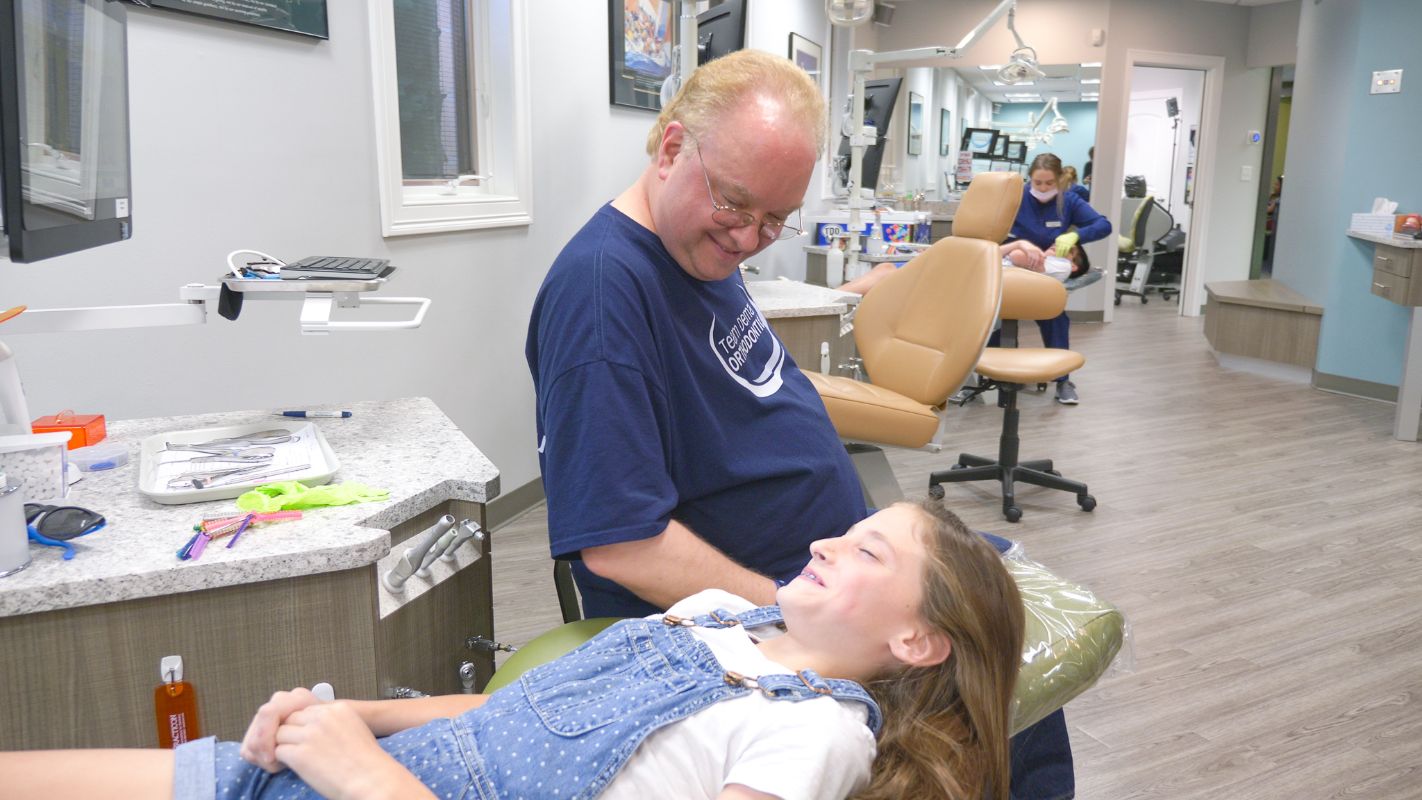
by | Aug 28, 2019 | Uncategorized
With new technologies and treatment methods emerging in the orthodontics all the time, it can be easy to forget that traditional braces are still one of the best tools we have for creating beautifully aligned smiles. In fact, today’s braces are more comfortable and customizable than ever before! As a long-lasting, cost-effective solution for giving you a healthier, straighter smile, braces are hard to beat. That’s one reason why they remain the top orthodontic treatment year after year!
If you’ve recently decided to move forward with braces treatment here at Team Demas Orthodontics, we’re excited to work with you to improve your oral health and achieve the smile you’ve always wanted. We honor the trust you’ve placed in us, and want you to feel confident in your choice to pursue orthodontic treatment with our practice. Braces are one of the best investments you can make for yourself and your family, and as such, you may have some questions or concerns before beginning your treatment. This can be especially true if you aren’t sure what to expect from the process in the months ahead.
To help you feel more comfortable with your upcoming orthodontic journey, our expert team has put together this guide to help you learn everything you need to know before getting your braces put on. Keep reading below to understand more about what braces actually are, how they work to straighten your teeth, and how you can get the most out of yours!
What are braces made of?
There are a number of moving parts involved in aligning your teeth with braces, but for brevity, we’ll just go over some of the most important ones.
Brackets
Brackets are the part of braces that we attach directly to your teeth. Because they’re typically made from a mix of stainless steel, nickel, ceramic, or other high-quality materials, they’re very durable. Brackets have tiny hooks or doors over which the wire is threaded, and are secured by closing the door or by applying an elastic over the top of the wire.
Glue
Tooth glue is technically a form of the same composite bonding material that we use for tooth-colored fillings or sealants. This adhesive is used to attach the brackets to the teeth. In some cases, we may use metal bands on the back teeth in conjunction with the glue to give braces more leverage and stability.
Wire
This thin piece of metal runs from one bracket to another, and the changes in its shape and curvature are what prompt the teeth to move where we want them to go. With some patients, the wire will attach all the bottom or upper teeth together. For others, we may choose to cut the wire strategically if connecting only a few teeth makes more sense for the treatment plan.
Elastics
Most patients will need elastics at some point in their treatment plan, and they’re especially important for patients in need of bite correction. The elastics are usually strung between an upper bracket hook and a lower bracket hook, pulling the upper teeth backwards to correct an overbite, or the lower teeth backwards to correct an underbite. We can use rubber bands for several different scenarios, but they can be particularly useful for bringing the upper and lower teeth together successfully.
Orthodontic bands
These stainless steel rings are cemented to the teeth using dental bonding agents to provide an anchor for braces and other orthodontic appliances. We don’t need to use these with every patient.
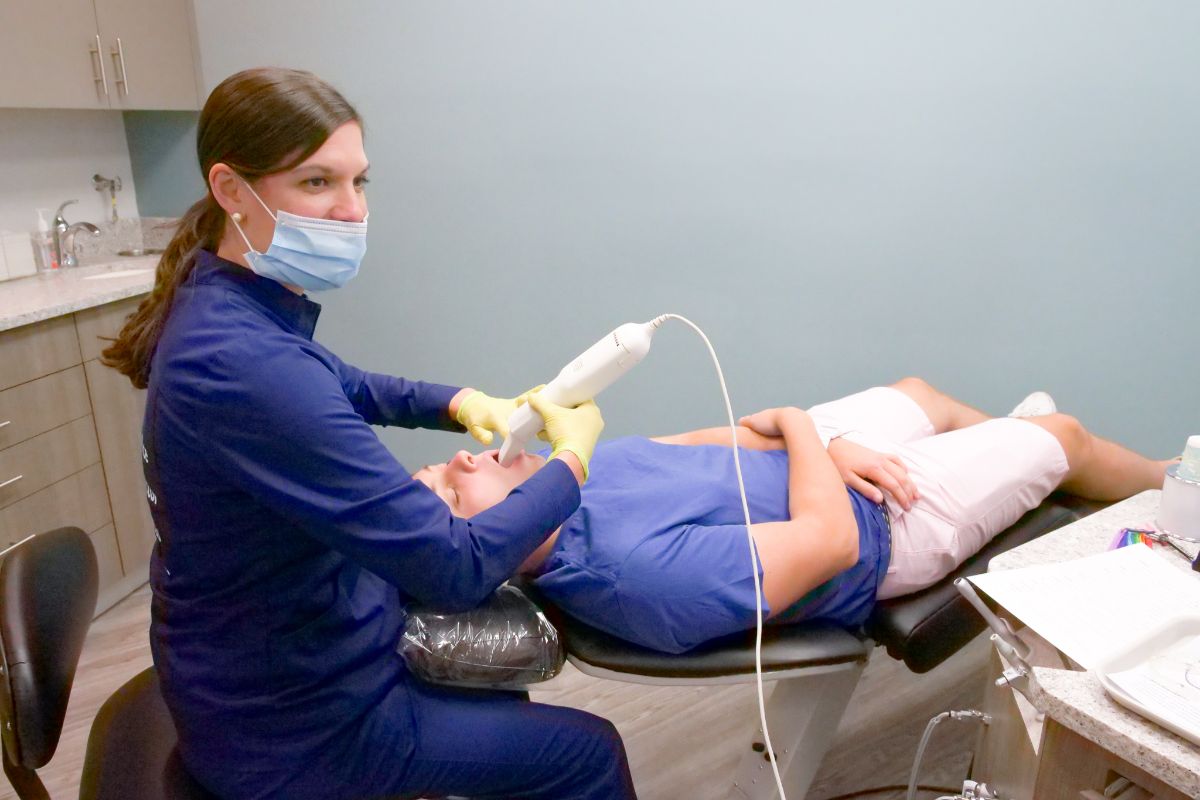
How do braces actually work?
Following your complimentary consultation with Dr. Demas, he will create a personalized treatment plan for you. This plan will include information on how each tooth needs to be moved in to reach the most optimal position. Using this information as a guide, Dr. Demas will then bond the brackets directly to your teeth before inserting the wire. We use specific bends in the wire to encourage precise movements, with each bend providing a different type of pressure on different teeth. This process is called remodeling, and it involves minor changes in the bone that surrounds the roots of teeth.
As the braces begin to put pressure on the tooth, cells called osteoblasts and osteoclasts will start forming around the tooth’s root. The pressure of the wire then works with these osteoblasts and osteoclasts to create a negative pressure on one side of the tooth. At this site, bone is removed. On the other side of the tooth, bone is reformed. This pressure, removal, and reforming is what slowly moves each tooth into the desired position and eventually gives you a straighter smile!
The remodeling process can only continue as long as constant pressure is being placed on the teeth. Once your braces are removed, that pressure is eliminated and your teeth will begin to settle into their new positions. However, the teeth will eventually start to drift back to their old positions if there’s not some sort of pressure holding them in place. This is where retainers come in! You’ll be given one as soon as your braces come off, and it’s imperative that you wear it exactly as directed. This is what will keep your new smile in place and prevent any natural drifting from occurring.
Caring for your braces
Learning to brush and floss with braces has a bit of a learning curve, but with patience and practice, you’ll be a pro in no time! We recommend brushing your teeth at least twice a day with fluoride toothpaste, especially after eating and before you go to bed. Pay careful attention to the areas between the brackets and gums, and be sure to carefully clean in between the wires and teeth. If you have trouble reaching these areas, an interdental brush can often help you with removing any plaque and food particles.
You should be flossing at least once per day, preferably before bedtime so that you can take your time and do it correctly. It can be hard to floss effectively with regular dental floss while you’re in braces, but it’s an important part of oral care that you shouldn’t skip. Instead, try a floss threader or oral irrigator to help remove lingering debris and plaque. Keep in mind that as useful as they are, supplemental tools should not take the place of a regular brushing and flossing routine.
Food restrictions
We know how frustrating food restrictions can be, but they’re necessary to protect your braces and your teeth during treatment. While you’re in braces, you’ll need to avoid anything that’s too crunchy or too chewy, including chips, ice, gum, some raw fruits and veggies, popcorn, nuts, and many types of candy. Fortunately, food restrictions are only temporary! Keep your treatment on track by sticking with them, and your hard work will all pay off when we remove your braces and you see your new smile for the very first time.
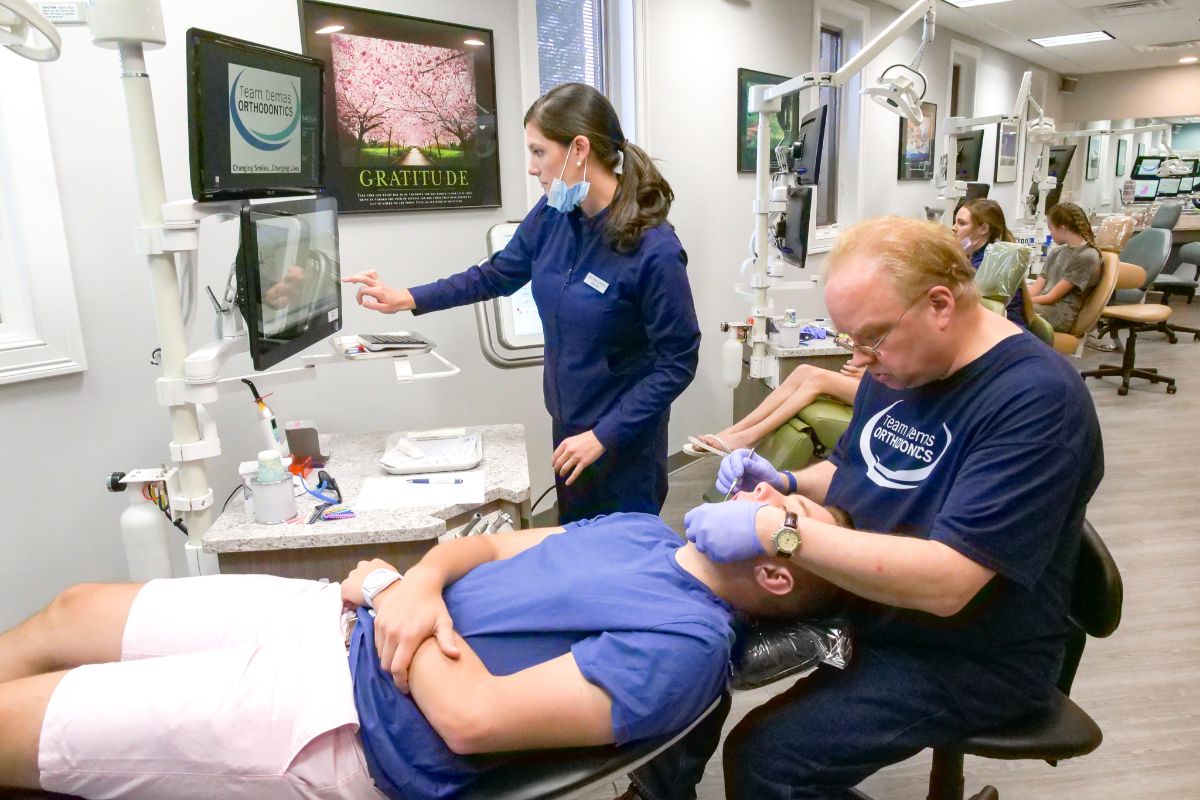
Treatment times vary
Because every smile we treat is unique, each patient will respond to treatment in their own way. That’s why we’re not able to offer any “one size fits all” answer when it comes to how long treatment will take. Several factors come into play, including your specific needs, the severity of your case, and your level of compliance. On average, however, the active stage of treatment with braces tends to last from 6-24 months. Of course, this may be longer or shorter for you, depending on the particulars of your case.
Get the smile you’ve been waiting for at Team Demas Orthodontics
If you haven’t yet made the decision to seek orthodontic treatment, we’d love to meet you and share more about the many ways that orthodontics could benefit your smile! For more information, get in touch with out Southington office to schedule a complimentary consultation with Dr. Demas. This is the perfect time to take the first step towards the smile you’ve been waiting for!

by | Jun 28, 2019 | Uncategorized
Summer may be flying by, but there’s still plenty of time to have a fun-filled adventure or two before school starts back. Are you tired of pools and splash pads, and desperate to get the kids off their electronic devices and out of the house? Team Demas Orthodontics can help! Did you know that our town has twice been named by Money magazine as one of America’s “100 Best Places To Live”? With so much history, art, and culture on our doorstep, there’s plenty for you and your family to get out there and explore! Our team has put together a few of our favorite things to do around Cheshire in the summer, so take a look below for more info.
Artsplace
1220 Waterbury Rd
Cheshire, CT 06410
At Artsplace, children ages 3 and up can practice their budding art skills in classes taught by nationally acclaimed instructors. The spacious, colorful environment gives kids plenty of room to explore drawing, watercolor, animation, clay, painting, pottery, pastels, and more. Students and staff can even choose to sell their creations in the Artsplace Gallery and Boutique, where 15% of the proceeds go to Art Heals, an art program for homebound Cheshire residents. You will need to pre-register for classes to ensure there’s sufficient space and supplies, and children will need to be dropped off for classes. Click here to view the current class descriptions.

Barker Character, Comic & Cartoon Museum
1188 Highland Ave
Building B
Cheshire, CT 06410
With over 80,000 antiques and toys, the Barker Museum contains one of the largest toy collections in the country. From the character cut-outs and statues outside to the displays inside, this is one indoor activity sure to put a smile on your face. Owners Herb and Gloria Barker began collecting animation and entertainment art in the 1960s, which led them to eventually open it to the public in 1994. They’ve got toys from every generation, including rubber duckies, dolls, superheroes, and so much more! The museum is open Wednesday through Saturday from 12:00-4:00pm, and children under age 3 get in for free.
Bartlem Recreation Area
520 S Main St
Cheshire, CT 06410
For those nice days when the weather’s not too hot, this beautiful park is the perfect place to be! The amenities include a 90-foot baseball diamond, soccer and lacrosse facilities, the innovative Kids In Motion playscape, a pavilion and picnic area, community gardens, and a killer skate park. There’s also a large playground that’s fenced in with swings, numerous slides, a climbing wall, spider net, and numerous other attractions. Children of all ages can find something fun to do here, and there are plenty of benches and shaded areas if you need to take a break from the sun.

Sweet Claude’s Ice Cream
828 S Main St
Cheshire, CT 06410
This small shop is a family-owned business that’s been satisfying sweet cravings in Cheshire for nearly 30 years. They make everything from scratch, and although there’s not much room inside the parlor, there are picnic tables outside where you can sit and enjoy house specialty flavors like Ram Trax, Claude’s Cupcake, and Mississippi Mud. Prefer fro-yo or tofutti, instead? Sweet Claude’s has got you covered! You can have your Coffee Double Chip and eat it, too, along with Pistachio and Vanilla Raspberry Swirl. If you’re looking for a potluck or picnic dessert, there’s a large selection of specialty pies and cakes on hand, like Death By Chocolate, Mississippi Mud Pie, and Mint Chip. Keep in mind they only take cash, so bring enough to treat the fam!
Roaring Brook Falls
857 Roaring Brook Rd
Cheshire, CT 06410
Connecticut’s highest single drop waterfall is right in our own backyard! Located at the end of Roaring Brook Road, the hike is just under 3 miles and spectacular after a heavy rain. Be prepared for a moderate uphill hike over a steep and rocky ravine, and a round trip that will take about an hour. Most children will have no problem climbing to the top, but toddlers should be carried in a hiking backpack for safety. It’s worth it for the view! The woods are maintained by the Cheshire Land Trust, so no park entrance fees apply. The trail is open year-round and dogs are allowed, but must be on a leash.
Keep your child’s smile in shape this summer
Whatever you and your family are planning this summer, we want our orthodontic patients to have fun without losing sight of their treatment plan. That means keeping up with caring for their braces or aligners so that treatment isn’t interrupted, even if your regular routine is!
To help your child get through the summer with their braces and treatment schedule intact, all you need is a little thinking ahead and a few helpful recommendations like:
- Keep an orthodontic kit with you for braces care on the go, and include a toothbrush, toothpaste, floss, and a little orthodontic wax
- Put our phone numbers and email address in your phone or write it down somewhere, so we can walk you through any unexpected emergencies that may occur while you’re out and about
- If your child is in braces, make sure they stick to treats that are orthodontist-approved, and avoid offering anything that’s too crunchy or chewy
- Be sure your child’s dental hygiene routine is maintained and that they are brushing at least twice a day for two minutes each time and flossing every night before bed
By following the tips we’ve outlined above, you can make the most of the summer without sacrificing your child’s smile! Don’t forget that you can always count on our talented team for expert support and advice if you ever have any questions or concerns, too. Team Demas Orthodontics is here to help your child achieve a healthy smile all year long!

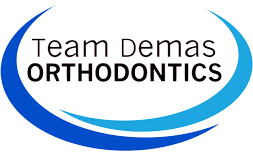







 According to the American Association of Orthodontists, there are around 4 million Americans wearing braces today. As family orthodontists, we know that sometimes there can be issues that come with wearing them. It’s important to know how to handle them when they come up. Here are some common issues with braces you should know how to handle.
According to the American Association of Orthodontists, there are around 4 million Americans wearing braces today. As family orthodontists, we know that sometimes there can be issues that come with wearing them. It’s important to know how to handle them when they come up. Here are some common issues with braces you should know how to handle.
 When compared to teens with traditional braces, 47% of Invisalign users said they had a confidence boost, as opposed to 22% of teens with metal braces. While crooked and misaligned teeth can make you self-conscious on their own, having metal over them during treatment can make you feel even worse. While braces are the best way to straighten teeth, if you don’t want to hide your smile during treatment it may be time to consider Invisalign aligners.
When compared to teens with traditional braces, 47% of Invisalign users said they had a confidence boost, as opposed to 22% of teens with metal braces. While crooked and misaligned teeth can make you self-conscious on their own, having metal over them during treatment can make you feel even worse. While braces are the best way to straighten teeth, if you don’t want to hide your smile during treatment it may be time to consider Invisalign aligners.
 Out of every four patients that receive braces, one is an adult. Deciding to get braces later in life is a big decision, and many put it off simply because they don’t like the look of traditional metal braces. To help these patients achieve straighter teeth, Invisalign aligners are an option offered by many affordable orthodontists. These clear braces are nearly invisible to the naked eye and can make you feel better about smiling during treatment, without worrying about flashing your braces to everyone. If you’re tired of struggling with crooked and misaligned teeth, here is what you need to know about this incredible option.
Out of every four patients that receive braces, one is an adult. Deciding to get braces later in life is a big decision, and many put it off simply because they don’t like the look of traditional metal braces. To help these patients achieve straighter teeth, Invisalign aligners are an option offered by many affordable orthodontists. These clear braces are nearly invisible to the naked eye and can make you feel better about smiling during treatment, without worrying about flashing your braces to everyone. If you’re tired of struggling with crooked and misaligned teeth, here is what you need to know about this incredible option.




